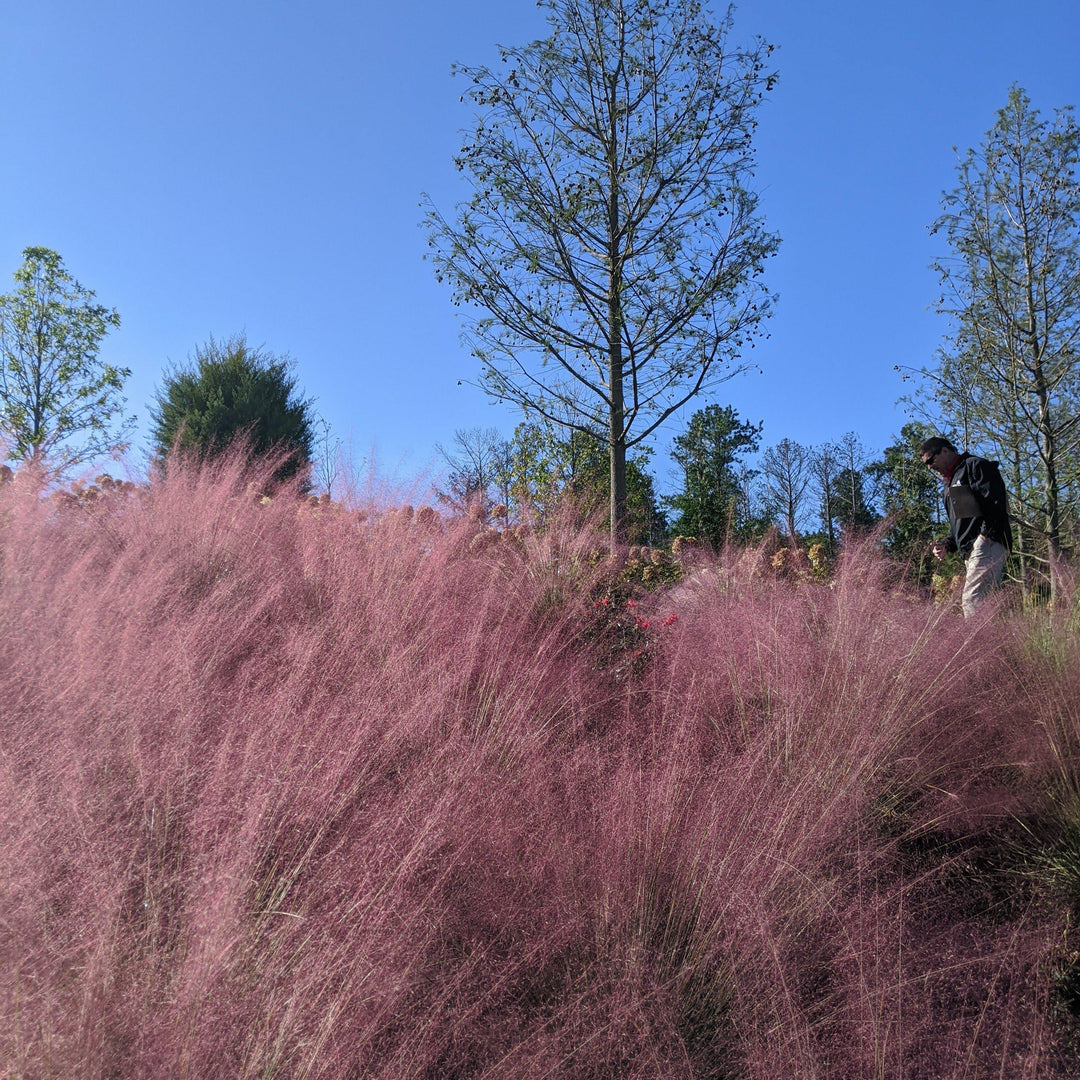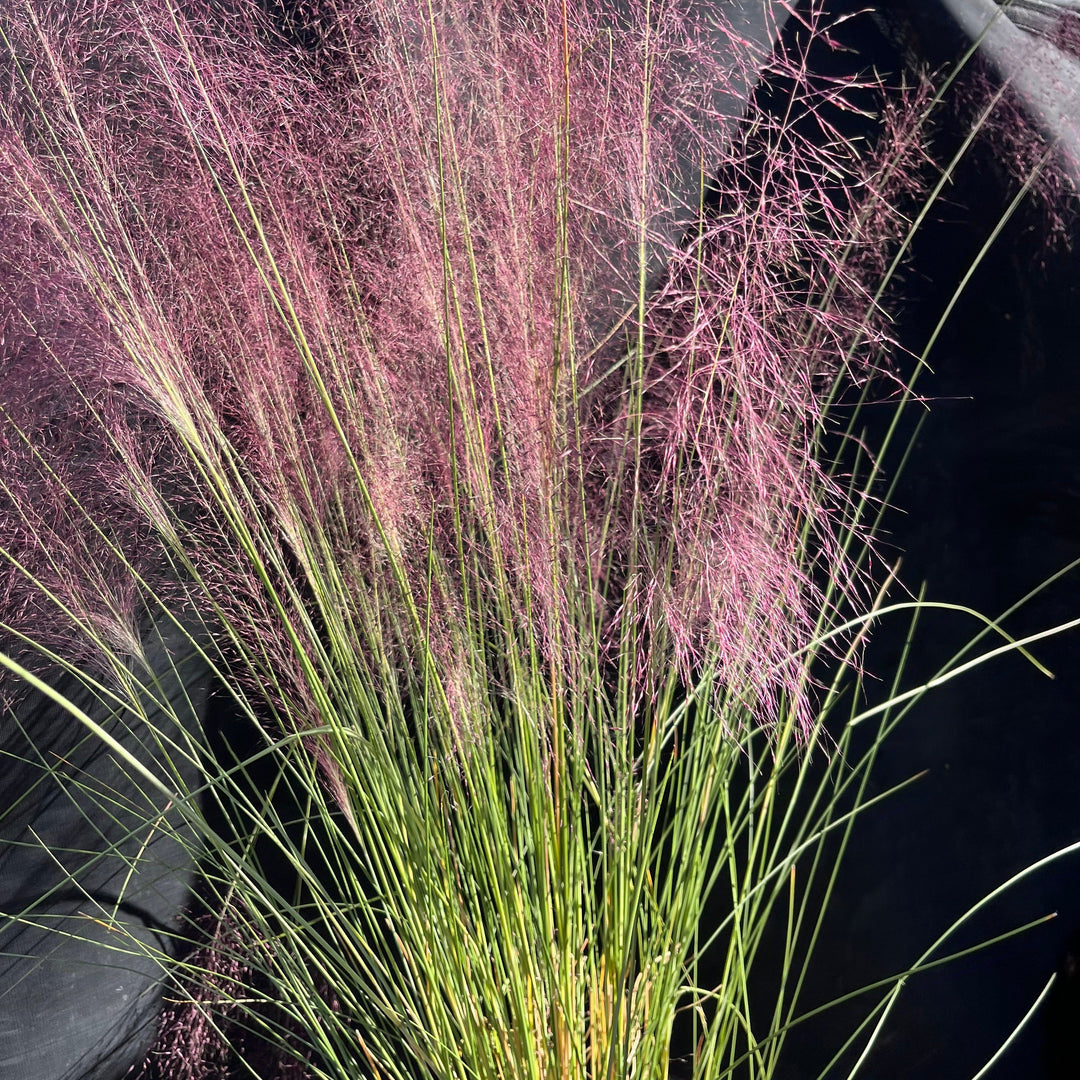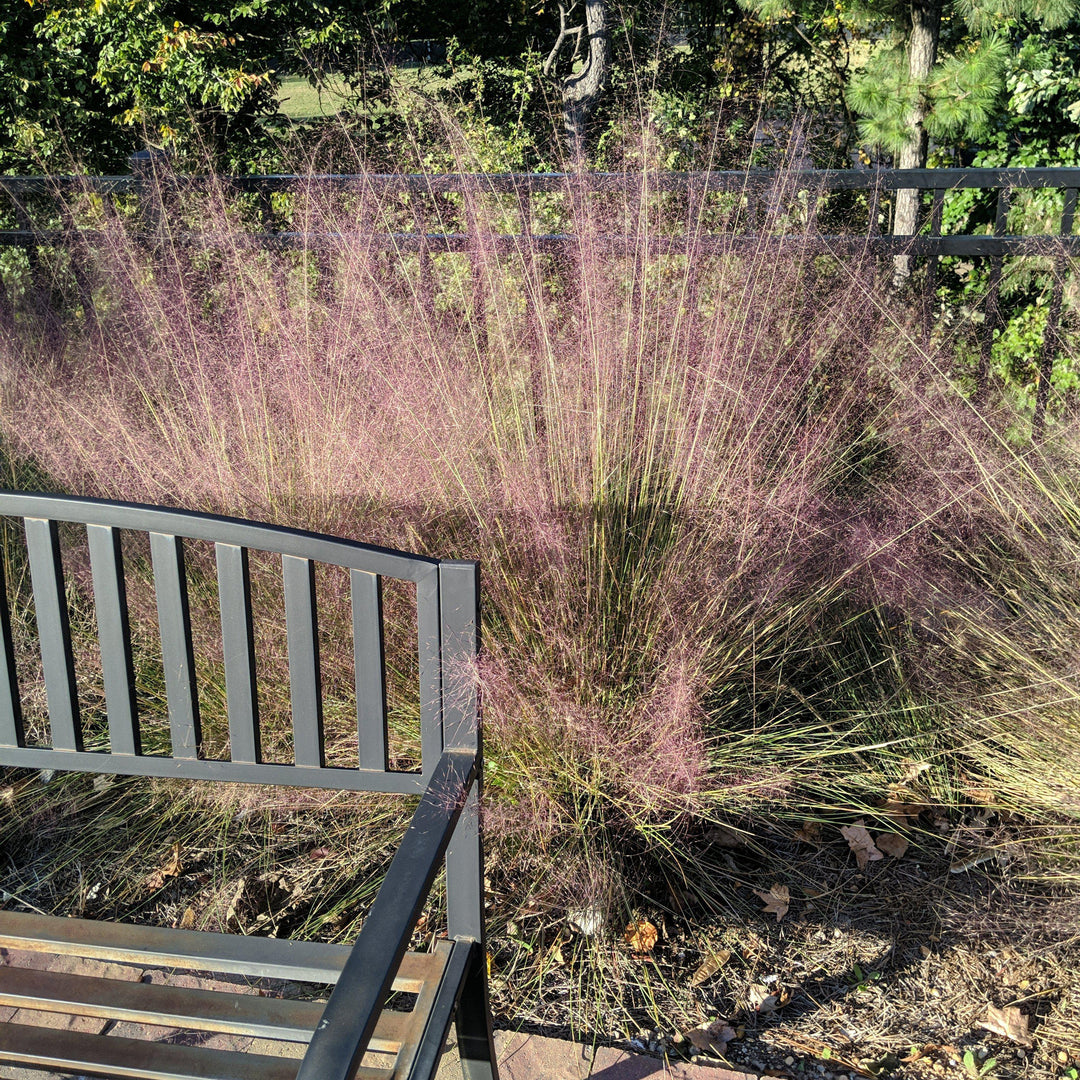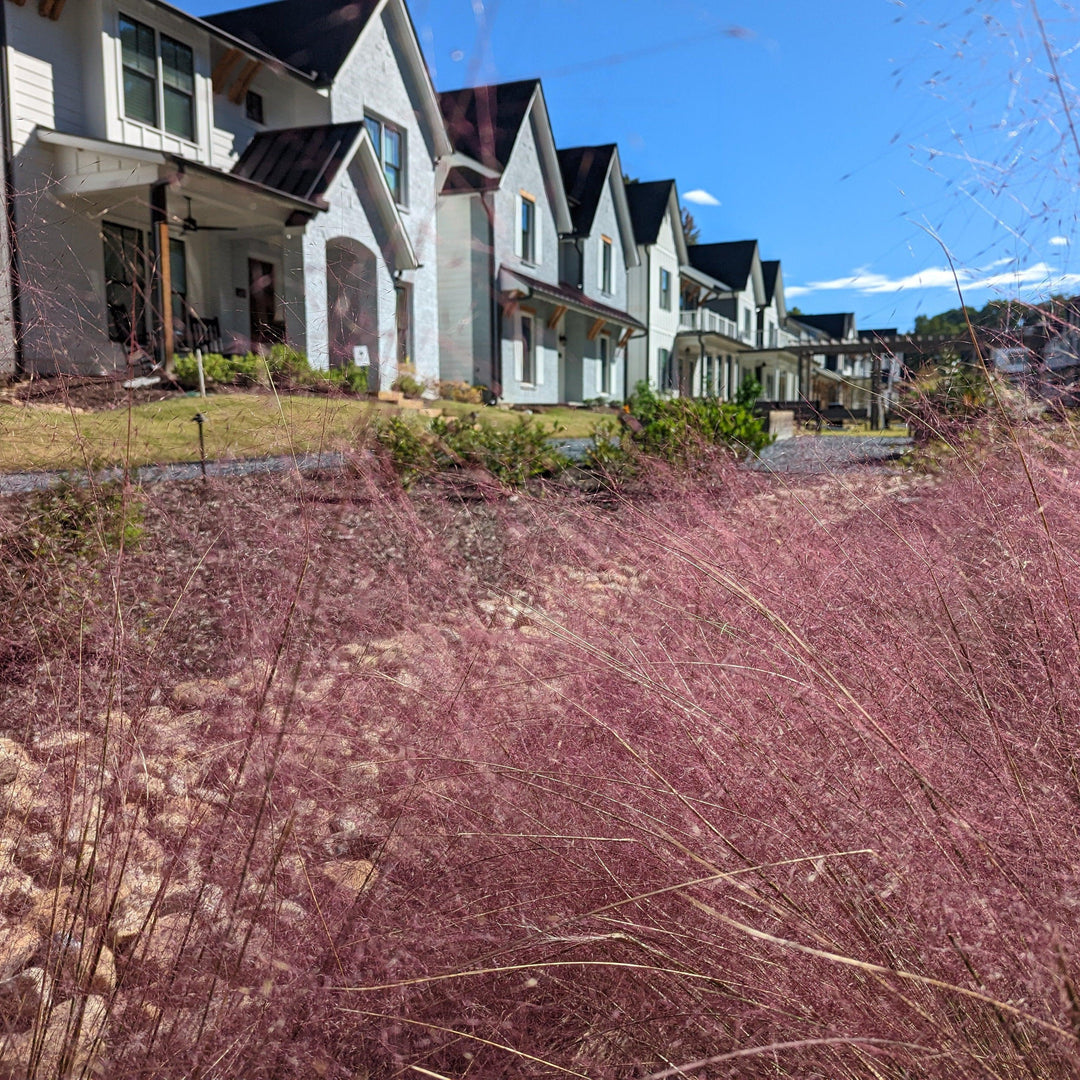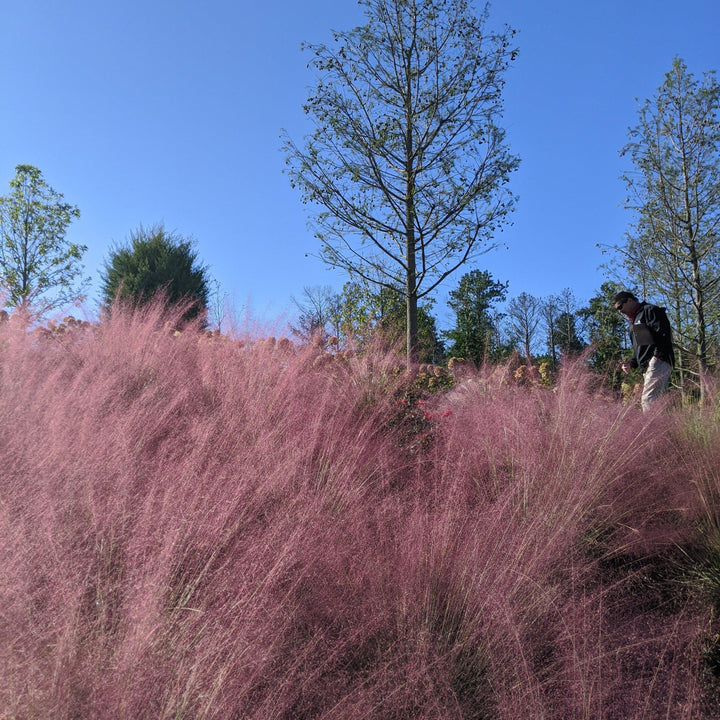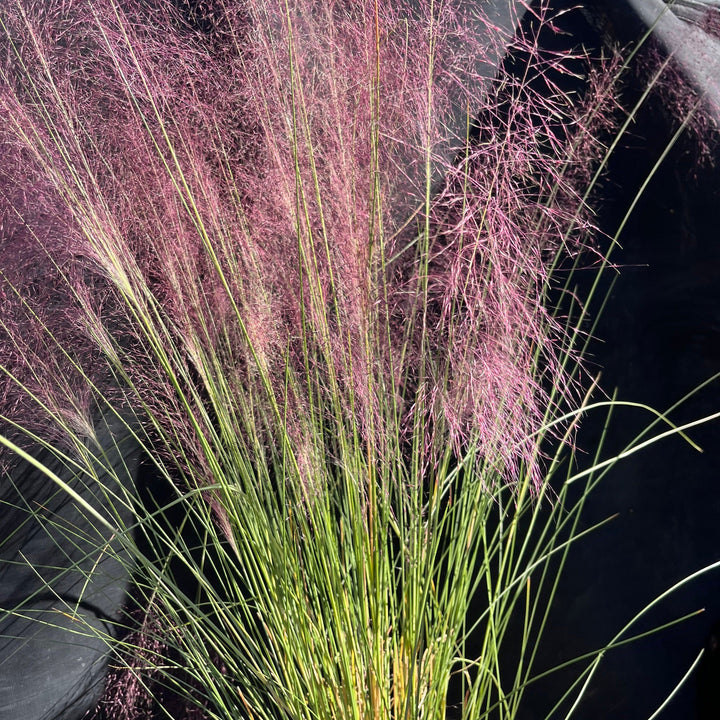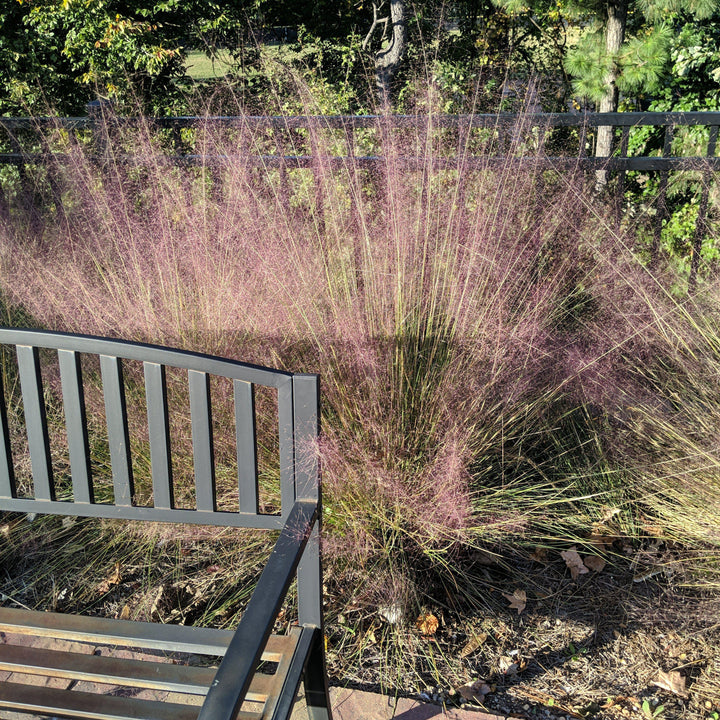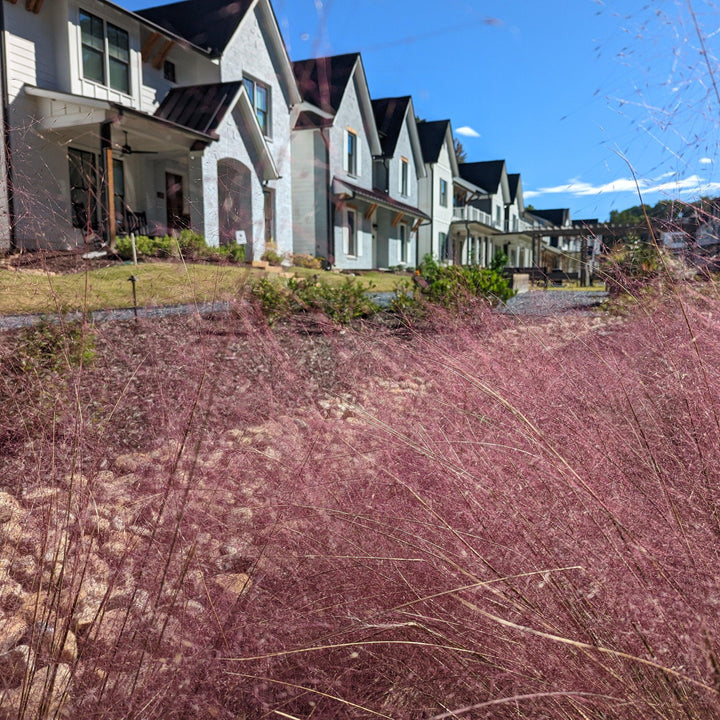Pink Muhly Grass
Muhlenbergia capillaris
Pink Muhly Grass is a delicate looking ornamental grass that forms dense clumps of upright grass-like foliage. The narrow dark green foliage is topped with fluffy pink plumes bloom above the foliage in late summer and fall and tan seed heads persist into winter. Best color in full sun and moist well-drained soil.
Muhlenbergia capillaris acts as a host plant for several moth and butterfly species, as well as provides habitat for traveling butterflies.
|
Type: |
|
|
Origins: |
Eastern North America, Georgia Native |
|
Height: |
2' - 3' |
|
Spread: |
2' - 3' |
|
Spacing: |
2’ |
|
USDA Hardiness Zone: |
6 - 9 |
|
Culture: |
|
|
Bloom Color: |
Pink/Tan |
|
Season of Interest: |
MAINTENANCE NEEDS:
Pink Muhly Grass is known for being a low maintenance plant. Here are some general maintenance tips to keep your Pink Muhly Grass thriving:
- Watering: Initially, after planting, ensure it receives adequate water to establish roots. Once established, it is quite drought-tolerant and will only need supplemental watering during prolonged dry spells.
- Soil: It prefers moist, well-drained soil but is adaptable to a variety of soil types.
- Sunlight: For the best foliage color and flower production, plant Pink Muhly Grass in full sun. It can tolerate part sun but with possibly less vigor and fewer blooms.
- Fertilizing: Generally, Pink Muhly Grass does not require much fertilization. If needed, a light application of a balanced, slow-release fertilizer in the spring can be beneficial.
- Pruning: Cut back the foliage in late winter or early spring before new growth starts. This helps to keep the plant looking tidy and encourages healthy new growth.
- Division: Every few years, you may divide the grass clumps in the spring if they become too large or to propagate new plants.
Remember, Pink Muhly Grass is a beautiful and easy-care addition to any landscape, offering seasonal interest with minimal effort. Plant Joy! 🌿
LANDSCAPE USES: Accents or Group Plantings, Borders, Naturalized Areas, Woodland Garden, Native Gardens, and Containers.
COMPANION PLANTS: Black-eyed Susan, Coneflower, Speedwell
*As plants have ranges in appearance they may not appear as the images shown
